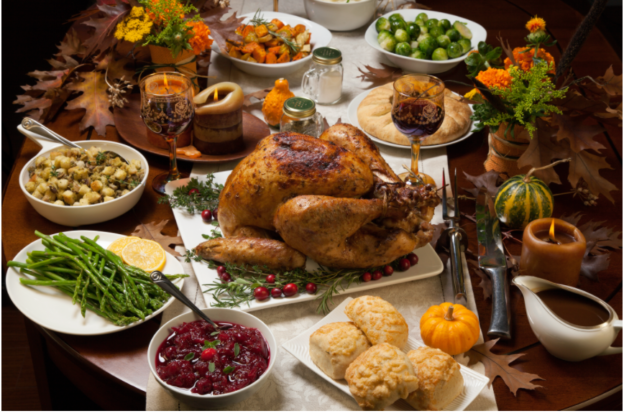An untranslatable word from Georgia meaning that feeling you get when you’re enjoying your meal so much that you accidentally eat the whole thing.
Happy Thanksgiving!
***


An untranslatable word from Georgia meaning that feeling you get when you’re enjoying your meal so much that you accidentally eat the whole thing.
Happy Thanksgiving!
***
“Know your stuff, know what you are stuffing, then stuff it elegantly.“ — Lola May
Back in the middle ages in England, stuffing was known as farce, from the French farcir (derived from the Latin farcire), meaning “to stuff”. Farce also referred then to a brief and lighthearted dramatic interlude or play ‘stuffed’ for light relief between more serious religious presentations in order to hold an audience’s attention, and that meaning survives in a more comedic version today. As well as farce, forcemeat was another term used for the spiced meat mixture that was so called because of the way it was forced into the cavity of the bird for cooking.
Stuffing first began to be used in Tudor England during the reign of Henry VIII (the word was first seen in print in 1538). However, a few hundred years on, it was deemed too vulgar and descriptive a word for those in elegant Victorian high society, who began referring to stuffing as dressing — and this was the word that traveled across the Atlantic and is now used widely in North America, although it was subsequently dropped from the vernacular in England where its more hearty antecedent was preferred.
When the American company Stove Top introduced its own brand of dressing in a box in 1972 (after Ruth Siems, a home economist, invented the instant version of the product) and called it “stuffing”, the traditional English name found its way into Thanksgiving turkeys and households around the United States. Stuffing tends to be heard more in the South and East, while dressing is the accompaniment of choice in the Midwest.
Happy Thanksgiving!